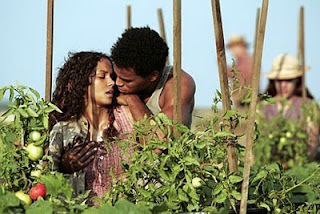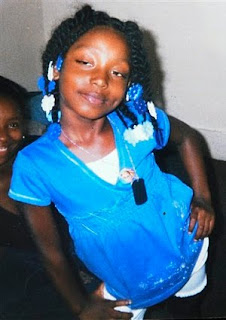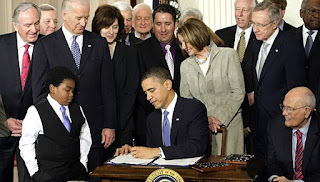
In the spring of 2010, I received an email from Dr. Rachel Griffin, who is an assistant professor of Speech Communication and my amazing mentor. The email read: MURAP SUMMER FELLOWSHIP FOR MINORITY UNDEGRADUATES. At first glance, I was ecstatic, and in the nerdiest voice I said, “OMG another research opportunity? I opened the email up (yes, I was elated before actually reading the email) and I read the email, then I saw this “Please pass along this information about the MURAP summer fellowship to any of your minority undergraduate students who are interested in pursuing a Ph.D. in the arts, humanities, or social sciences.” If you know me, you can probably conjecture that I was screaming for joy… “this is perfect, OMG!!!...I am going to apply” and a bunch of other expletives that shall remain unwritten. Then, as I neared the end of the email, I read this: “Each summer, the program brings a cohort of 18-22 undergraduates (rising juniors and seniors) from colleges and universities in the U.S. to the University of North Carolina at Chapel Hill campus for an intensive, ten-week research experience.” That was it, I went crazy, I called everyone I knew,—my exact words to them were “I think I am going to apply to this summer program, it WAS meant for me.” Mind you, anything that has to do with research is meant for me, at least in my world. I am a NERD.
At this point, I was convinced that I was going to apply to the program. I began to frequent the website to do some extensive reading about the Moore Undergraduate Research Apprentice Program (MURAP), and frankly, I fell in love! However, there were a couple of issues, one, as a Ronald E. McNair Scholar, I was on track to complete research the same summer that MURAP was scheduled, here at my home institution. So, of course, I freaked out, because I had a perfervid interest in MURAP, more importantly, the University of North Carolina (UNC). Nevertheless, being the tenacious and ardent person that I am, I set up an appointment with the director of the McNair Scholars program to discuss the possibility of becoming a visiting researcher at UNC, if I got into MURAP. Are ya’ll ready for the good news? She (director) said yes, she informed me that it wouldn’t hurt to apply—and that if I got in she would allow me to substitute my McNair research with my MURAP research. My heart began to pound—I began to fervidly thank her and of course, the almighty God.
Jumping ahead, I applied to MURAP; however, during the application process, I sporadically began to doubt my abilities and intellect, more sadly, I thought to myself, I am not good enough to study at UNC. I took a break away from the application and just really had a self-reflective moment of my life. During that moment, I was reminded of where I had come from and where I was trying to go, I made a promise that I wouldn’t allow anything to preclude me from reaching my goal (at least that’s how I felt in that moment, LOL). Nevertheless, I went back and completed the application and after a couple weeks, I sent everything off. WAIT, I am not done, remember I mentioned I was a tenacious an ardent person? Well, I am, I looked online at other similar programs, and I ran across the Leadership Alliance Summer Research Early Identification Program (SR-EIP). This program is very similar to MURAP, the difference between the two programs are that SR-EIP allows you to apply to three schools with only one application.
Yes, I reckon I had another NERD moment! The three schools I applied to were Cornell, Howard, and Brown, to be candid; I really thought I had no shot into either of those schools. After an exhausting and vexatious month of waiting to hear back from all four programs, I received decisions. Cornell accepted me into their program; Howard accepted me into their program; Brown said because I was accepted into my first two, they decided not to send an offer (As a note, during the application, you’re asked to rank the schools you are most interested in, I ranked Brown as #3). After a month of torturing myself mentally and physically about these programs, constantly underestimating myself—I was finally able to breathe and truly reflect on the goodness of God and my abilities to excel. Shortly after, I received an email from the MURAP program and got the best news of my life; I was accepted into the program. Out of 300+ applications, I was chosen to be a part of a cohort of 23 students from around the U.S.; this was truly a humbling and emotionally moment for me. So much so that I cried (yes, I am a black man and I cried).
Moreover, I was accepted to three out of the four programs (Cornell, Howard, and University of North Carolina), now…I had a very arduous decision to make. After a fastidious and onerous couple of days of contemplating the most fitting option, I chose MURAP, where I studied at The University of North Carolina-Chapel Hill for ten weeks. I must say it was the most amazing ten weeks of my life, I unequivocally believe that it has changed my life in insurmountable ways. I am now confident in myself and in the work that I produce; it’s a constant struggle.

This entry is for all of my brothers and sisters out there who are struggling to find who they are or questioning their abilities, as I did. This is especially for young Black men like me who are/were unsure of which route to take and what to do with their life; I am speaking to and with you all. I know what it feels like to think that everyone is against you or what it feels like to feel incapable of achieving your goals. This entry is also a struggle to find my voice and to help others and finding their voice; together we must create a space for the voiceless to give voice. Please brothers and sisters, never underestimate your talents, intellect, or abilities. If there is one piece of advice to give before I exit this piece it is, always be persistent, set a goal, and do whatever it takes to get there. Stay MOTIVATED. Stay DEDICATED.
Peace & Blessings,











